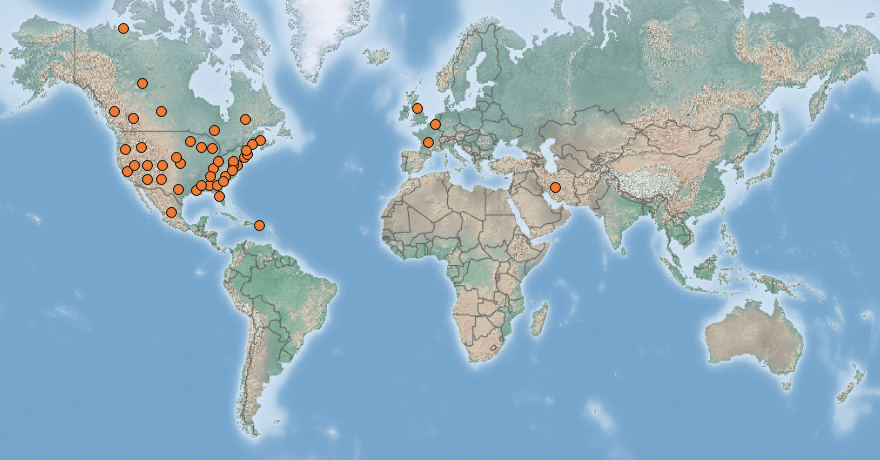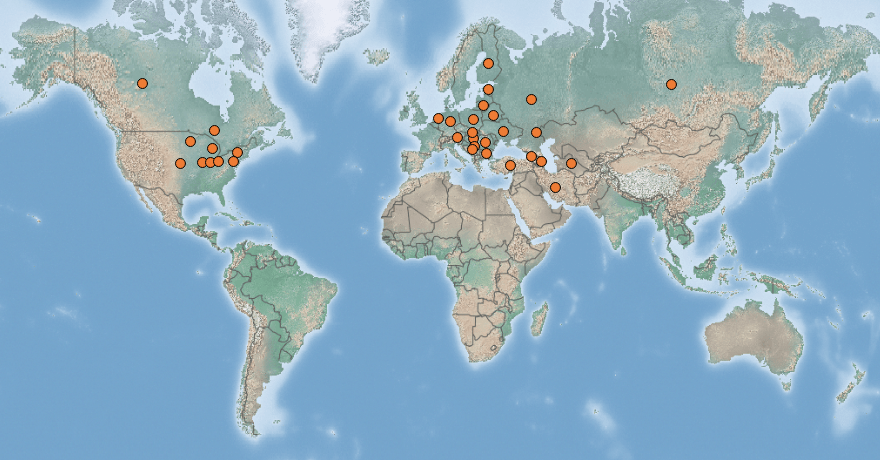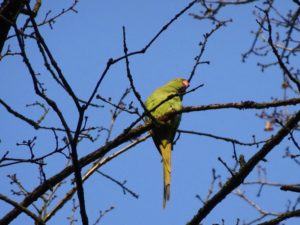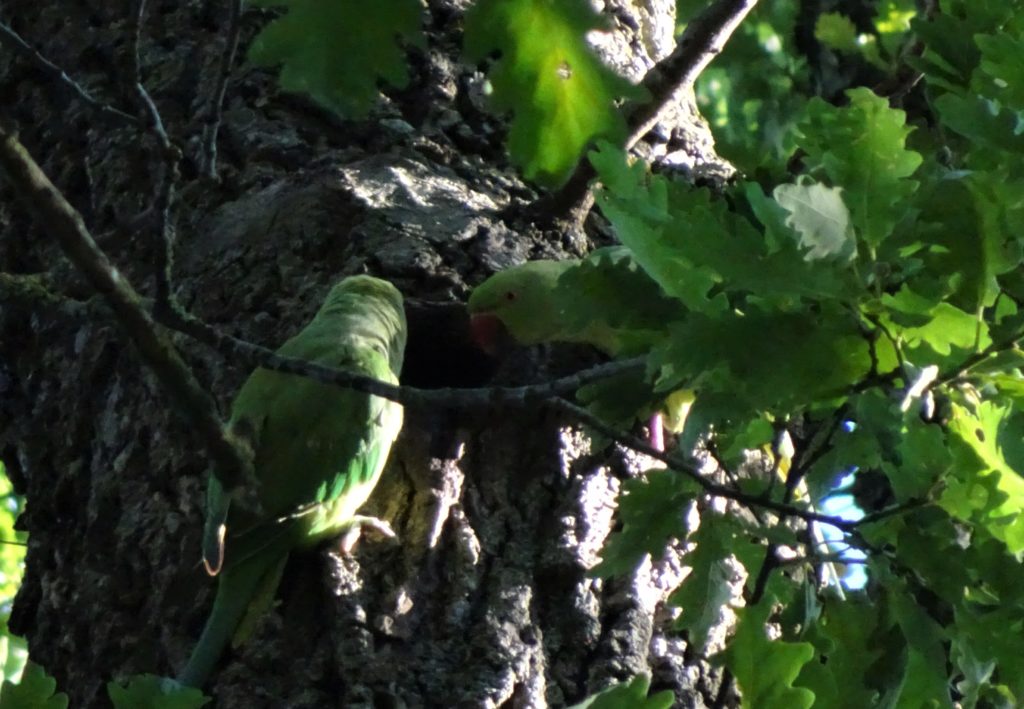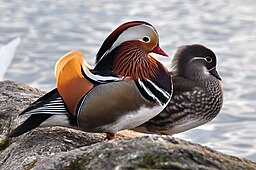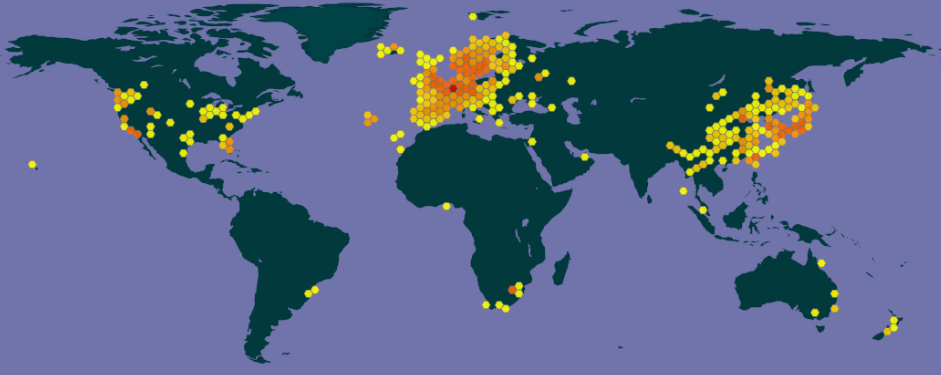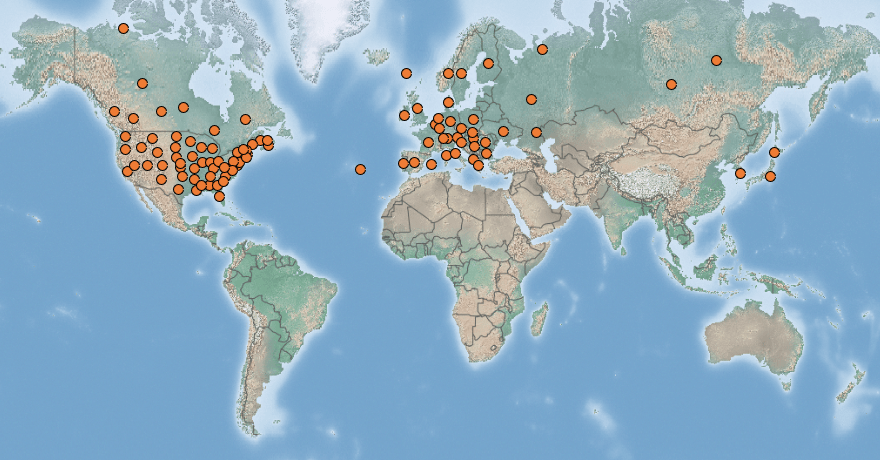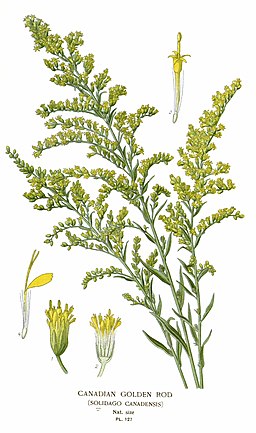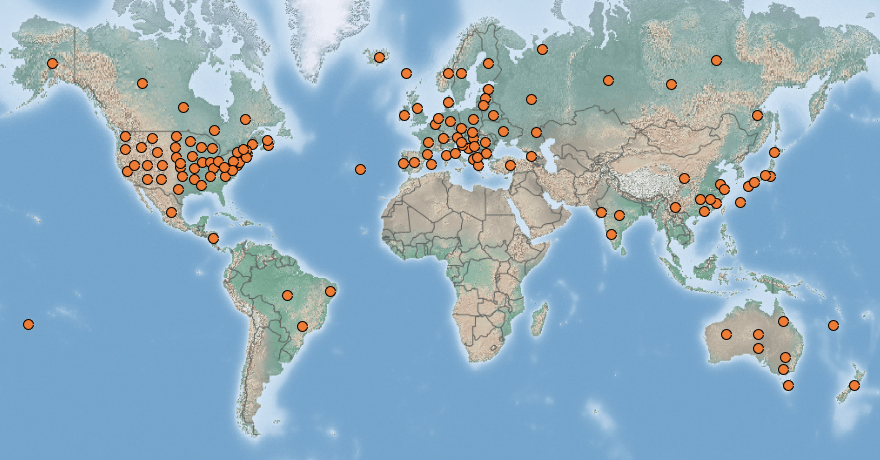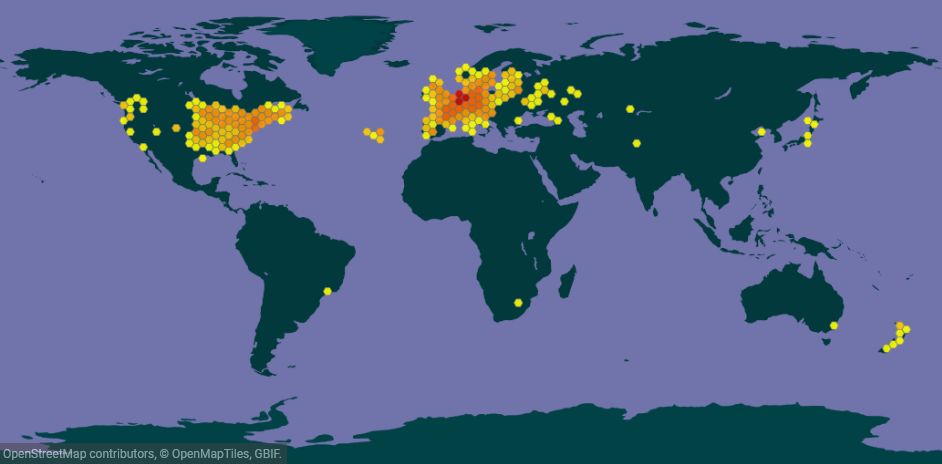 |
Yellow-bellied slider | Status LU: established. 1st record: ? |
 |
Gielpanz-Deckelsmouk | Status Eur.: established. IAS of EU concern (2016). |
 |
Tortue à tempes jaunes | RA: ISEIA: C1. Harmonia+: 0,10 |
 |
Gelbbauch-Schmuckschildkröte | Wikipedia:     | Wikispecies: | Wikispecies:  |
 |
Geelbuikschildpad | Back to the list of vertebrates |
Contents
Brief description
 Trachemys scripta scripta (Thunberg in Schoepff, 1792), the yellow-bellied slider, is a land and water turtle belonging to the family Emydidae. This subspecies of pond slider is native to the southeastern United States, specifically from Florida to southeastern Virginia, and is the most common turtle species in its range. It is found in a wide variety of habitats, including slow-moving rivers, floodplain swamps, marshes, seasonal wetlands, and permanent ponds. Yellow-Bellied Sliders are popular as pets (Wikipedia contributors, 2020a).
Trachemys scripta scripta (Thunberg in Schoepff, 1792), the yellow-bellied slider, is a land and water turtle belonging to the family Emydidae. This subspecies of pond slider is native to the southeastern United States, specifically from Florida to southeastern Virginia, and is the most common turtle species in its range. It is found in a wide variety of habitats, including slow-moving rivers, floodplain swamps, marshes, seasonal wetlands, and permanent ponds. Yellow-Bellied Sliders are popular as pets (Wikipedia contributors, 2020a).
The species has been introduced to many parts of the world primarily through escape or deliberate release, which often occurs when the “cute tiny turtles” have grown to large sizes up to 30 cm in a small aquarium.
IAS of Union concern
In 2016, the species Trachemys scripta (Thunberg in Schoepff, 1792), to which belongs the present subspecies Trachemys scripta scripta, was added to the list of invasive alien species of Union concern (Anonymous 2016) under it’s synonym Trachemys scripta (Schoepff, 1792). This implies that member states shall take all necessary steps to prevent it’s unintentional introduction or spread.
Status and distribution in Luxembourg
Records of Trachemys scripta scripta Thunberg in Schoepff, 1792 in Luxembourg. Data source: Recorder-Lux, iNaturalist & GBIF, 2025-08-02.
In 2024, some 340 records of the two subspecies Trachemys scripta scripta (Thunberg in Schoepff, 1792) and Trachemys scripta elegans (Wied-Neuwied, 1839) in Luxembourg are accessible through the MNHNL-mdata portal (MNHNL, iNaturalist & GBIF 2024).
An early observation in the wild in Luxembourg was made on 21st July 2015 by Manou Pfeiffenschneider in the river Chiers on the northern edge of the nature conservation area Dreckwiss (MNHNL, iNaturalist & GBIF 2020). It remains unclear if this observation can be considered as a first record of the subspecies in Luxembourg.
Invasive pond sliders have been observed climbing the platforms of waterbirds, especially great crested grebes (Podiceps cristatus), to sunbathe, thus preventing successful breeding (Konter 2020: 81). Although there is currently every indication that turtle hatchlings are unable to produce viable embryos in the climatic conditions currently prevailing in Luxembourg, this could change with global warming (De Sousa 2020).
Records of Trachemys scripta (Thunberg in Schoepff, 1792) in Luxembourg. Data source: Recorder-Lux, iNaturalist & GBIF, 2025-08-02.
Management
Action plan
An action plan concerning the two subspecies has been published in 2020:
→ Finalised Action Plan for Trachemys scripta (De Sousa 2020)
Risk assessment
ISEIA protocol
C1 (1+2+3+1) (Ries et al. 2014: 199).
Harmonia+ protocol
Overall risk score 0,10 = (Overall Invasion score 0,56 x Overall Impact score 0,18) (evaluated by Sandra Cellina, Roland Proess and Manou Pfeiffenschneider).
 Invasion
Invasion0,18

 Impact
Impact0,10

 Risk
RiskWorldwide distribution
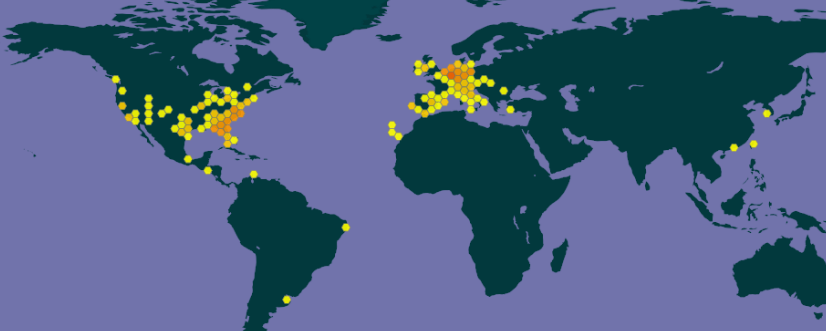
GBIF 2019a: https://www.gbif.org/species/7062200
Other Trachemys taxa
The pond slider Trachemys scripta (Thunberg in Schoepff, 1792) has three subspecies (Wikipedia contributors 2020b), of which the first two occur in Luxembourg:
- Trachemys scripta scripta (Thunberg in Schoepff, 1792), the yellow-bellied slider;
- Trachemys scripta elegans (Wied-Neuwied, 1839), the red-eared slider;
- Trachemys scripta troostii (Holbrook, 1836), the Cumberland slider. According to GBIF (2019b) this subspecies is already present in Europe (Belgium, The Netherlands, Germany, Poland and Spain)
Bibliography
- Anonymous, 2016. Commission implementing regulation (EU) 2016/1141 of 13 July 2016 adopting a list of invasive alien species of Union concern pursuant to Regulation (EU) No 1143/2014 of the European Parliament and of the Council. Official Journal of the European Union L 189: 4-5.
- De Sousa, T., 2020. Plan d’action pour espèces exotiques envahissantes au Grand-Duché de Luxembourg: la Tortue de Floride, Trachemys scripta ssp. (Schoepff, 1792). Version 2020-09-04. Administration de la nature et des forêts, Luxembourg. 24 pp.
- GBIF, 2019a. Trachemys scripta subsp. scripta in GBIF Secretariat (2019). GBIF Backbone Taxonomy. Checklist dataset https://doi.org/10.15468/39omei [accessed 2020-04-27]
- GBIF, 2019b. Trachemys scripta subsp. troostii (Holbrook, 1836) in GBIF Secretariat (2019). GBIF Backbone Taxonomy. Checklist dataset https://doi.org/10.15468/39omei accessed via GBIF.org on 2020-04-27.
- Konter, A., 2020. Schmuckschildkröten Trachemys scripla verhindern mehrere Haubentaucherbruten Podiceps cristalus auf dem Echternacher See. Regulus Wissenschaftliche Berichte 35: 81-86.
- MNHNL, 2000-. Trachemys scripta scripta (Thunberg in Schoepff, 1792) in Recorder-Lux, database on the natural heritage of the Grand Duchy of Luxembourg. Musée national d’histoire naturelle, Luxembourg. URL: https://mdata.mnhn.lu [Accessed 2020-02-04]
- MNHNL, iNaturalist & GBIF, 2019. Trachemys scripta scripta (Thunberg in Schoepff, 1792) in MNHNL-mdata, online portal combining species observation from Recorder-Lux, iNaturalist and GBIF. National Museum of Natural History, Luxembourg. URL: https://mdata.mnhn.lu [Accessed 2020-02-04]
- Ries, C., M. Pfeiffenschneider, Engel, E., J.-C. Heidt & M. Lauff, 2014. Environmental impact assessment and black, watch and alert list classification after the ISEIA Protocol of vertebrates in Luxembourg. Bull. Soc. Nat. luxemb. 115: 195-201. [PDF 247 KB]
- Wikipedia contributors, 2020a. ‘Yellow-bellied slider’, Wikipedia, The Free Encyclopedia, 18 March 2020, 03:07 UTC, <https://en.wikipedia.org/w/index.php?title=Yellow-bellied_slider&oldid=946106051> [accessed 2020-04-27]
- Wikipedia contributors, 2020b. ‘Pond slider’, Wikipedia, The Free Encyclopedia, 8 January 2020, 04:07 UTC, <https://en.wikipedia.org/w/index.php?title=Pond_slider&oldid=934733603> [accessed 2020-04-27]
Page content last updated on 2024-07-31. Last proofread by Caroline Grounds on 2019-11-29.


